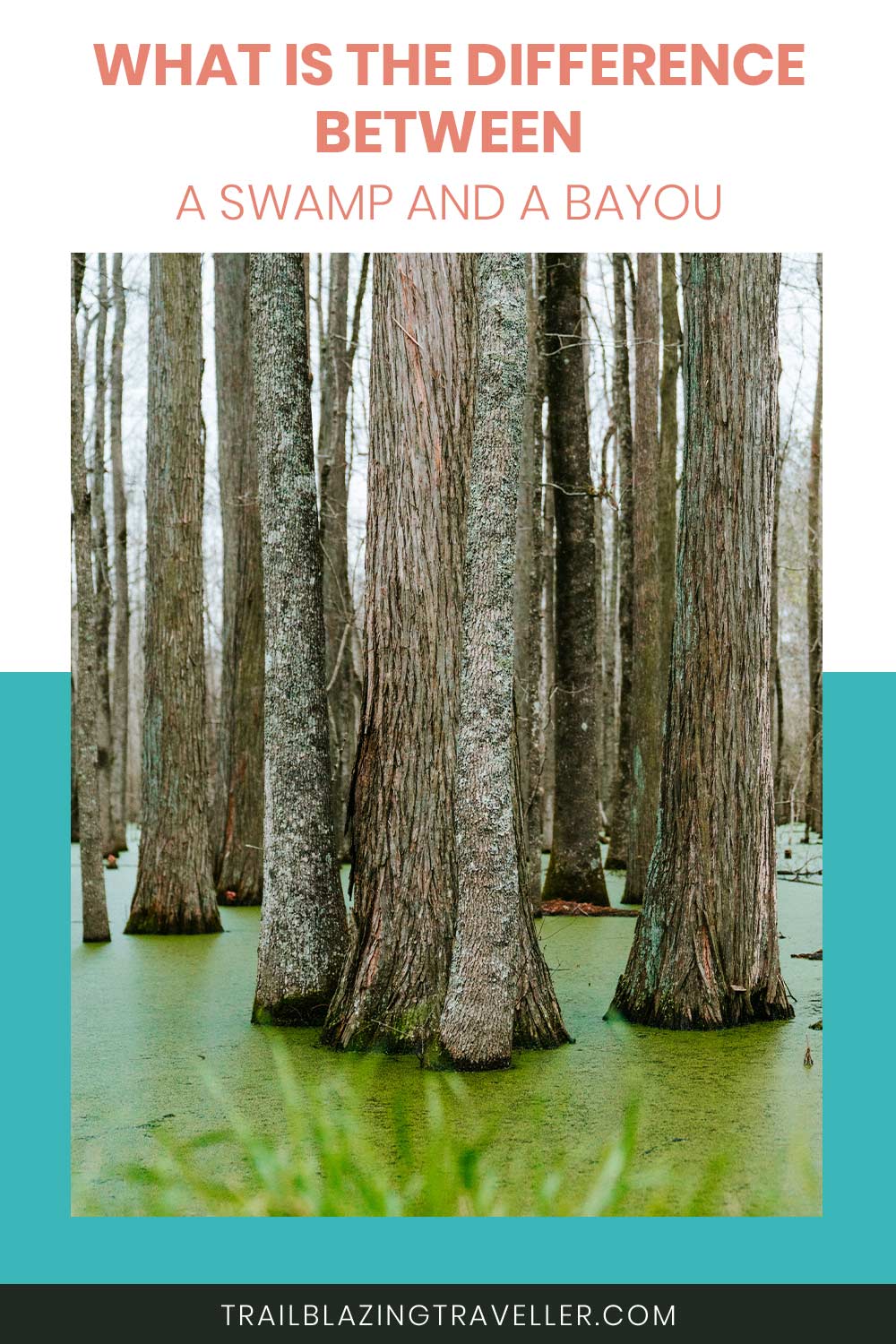If you’ve ever visited the southern United States, you may have heard the terms “swamp” and “bayou” thrown around interchangeably. However, the two words do not refer to the same geographical features.
A bayou is a type of creek or river, while a swamp refers to low-lying land that is often saturated and spongy with water but can still have some species of tree growing in the area.
Continue reading to learn more about the subtle differences between the two terms and how you can tell the two apart if you visit areas with these features.
Is a Swamp and a Bayou the Same Thing?
Many people incorrectly use words like swamp, marsh, or bayou to refer to the same boggy area where alligators or crocodiles reside.
The truth is that a swamp and a bayou are not the same things. Having a swamp without a bayou is possible, but it is much less likely for a bayou not to be surrounded by swampland.
Even though both are typically found in wetlands, they are not the same thing – the same goes for swamps and marshes.
What is the Difference Between a Swamp and a Bayou?
The biggest difference between the two is that a bayou refers to a slow-moving river or creek, while a swamp is just one example of a wetland. The bayou can be so slow that they are often considered to be stagnant bodies of water with practically no movement.
It is possible and likely for a swamp to surround a bayou because they share the same area of a watershed with poorly draining soils at low elevations.
Swamps have little agricultural or pastoral potential for meeting human needs. On the other hand, hunting alligators on a bayou is possible and easier. Swamps may provide a habit for some species of fish. Fishing in a bayou would be much easier.
How Can You Tell the Difference Between a Swamp and a Bayou?
Swamps often support some plant life like trees in their relatively shallow, standing waters, while you wouldn’t expect to see the same growth in the middle of a bayou.
A swamp is an area of land softened by plentiful groundwater and surface water at the most basic level. It can be waterlogged or may just be incredibly soggy with some trees spotted around.
On the other hand, Bayous are usually small offshoots of rivers with slow-moving water. They may have dirty-looking water because of the small current and will probably smell bad as a result.
You might be able to swim in a bayou and not a swamp, but we wouldn’t recommend trying to do so in either.
What Makes a Swamp and a Bayou Look Similar?
The reason that many people get the two terms confused with each other is that a bayou will often run through a swamp. This means there is usually a transition area between the two that blurs the line between what is a swamp and what is a bayou.
Bayous are almost exclusively found in the southern states of the U.S. near the Gulf Coast. States like Alabama, Louisiana, and Mississippi are the best examples of where to find bayous, but they also happen to have some extensive swamps.
The appearance of alligators in both swamps and bayous can also make the two look more similar than they actually are.
Final Thoughts on the Difference Between a Swamp and a Bayou
If you ever forget the finer details that differentiate swamps and bayous, just remember that a bayou is a slow-moving body of water like a river while a swamp is a piece of land that is constantly saturated with water.
You can think of the amount of water as the defining difference between the two since swamps don’t necessarily have any standing water while it may be possible, but ill-advised, to swim in a bayou with how much water there is.

